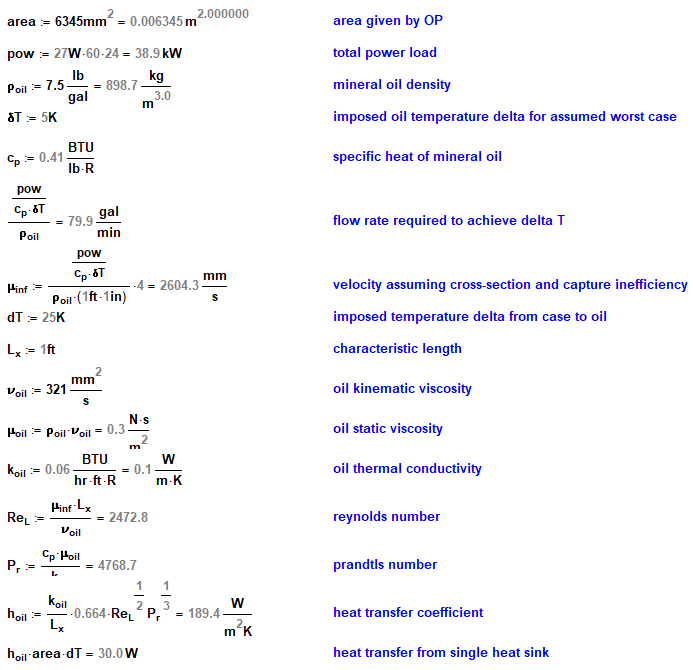Good day guys,
I am designing a cooling system for computer with large number of small processor. Simply, There will be 24 boards working together.
Each board have 60 heat sinks and generates 1600 W heat. So, we have 26.67 W heat, under each heat sink. This will be a liquid immersed cooling system. I have selected fluid. I calculated required speed of fluid to take away this heat for single heat sink, but numbers coming up here are impractical. I feel, am using wrong method.
I have these properties of fluid, density, specific heat, viscosity at 40 celsius, thermal expansion coefficient.
Heat sink is made up of aluminium and heat generated beneath the heat sink.
I need to find fluid velocity over heat sink.
Can anyone help on calculating this problem? You can also help me to setup the problem in ansys, if it can solve the problem with given information.
I am designing a cooling system for computer with large number of small processor. Simply, There will be 24 boards working together.
Each board have 60 heat sinks and generates 1600 W heat. So, we have 26.67 W heat, under each heat sink. This will be a liquid immersed cooling system. I have selected fluid. I calculated required speed of fluid to take away this heat for single heat sink, but numbers coming up here are impractical. I feel, am using wrong method.
I have these properties of fluid, density, specific heat, viscosity at 40 celsius, thermal expansion coefficient.
Heat sink is made up of aluminium and heat generated beneath the heat sink.
I need to find fluid velocity over heat sink.
Can anyone help on calculating this problem? You can also help me to setup the problem in ansys, if it can solve the problem with given information.

![[ponder] [ponder] [ponder]](/data/assets/smilies/ponder.gif) more than mach 3.
more than mach 3. 